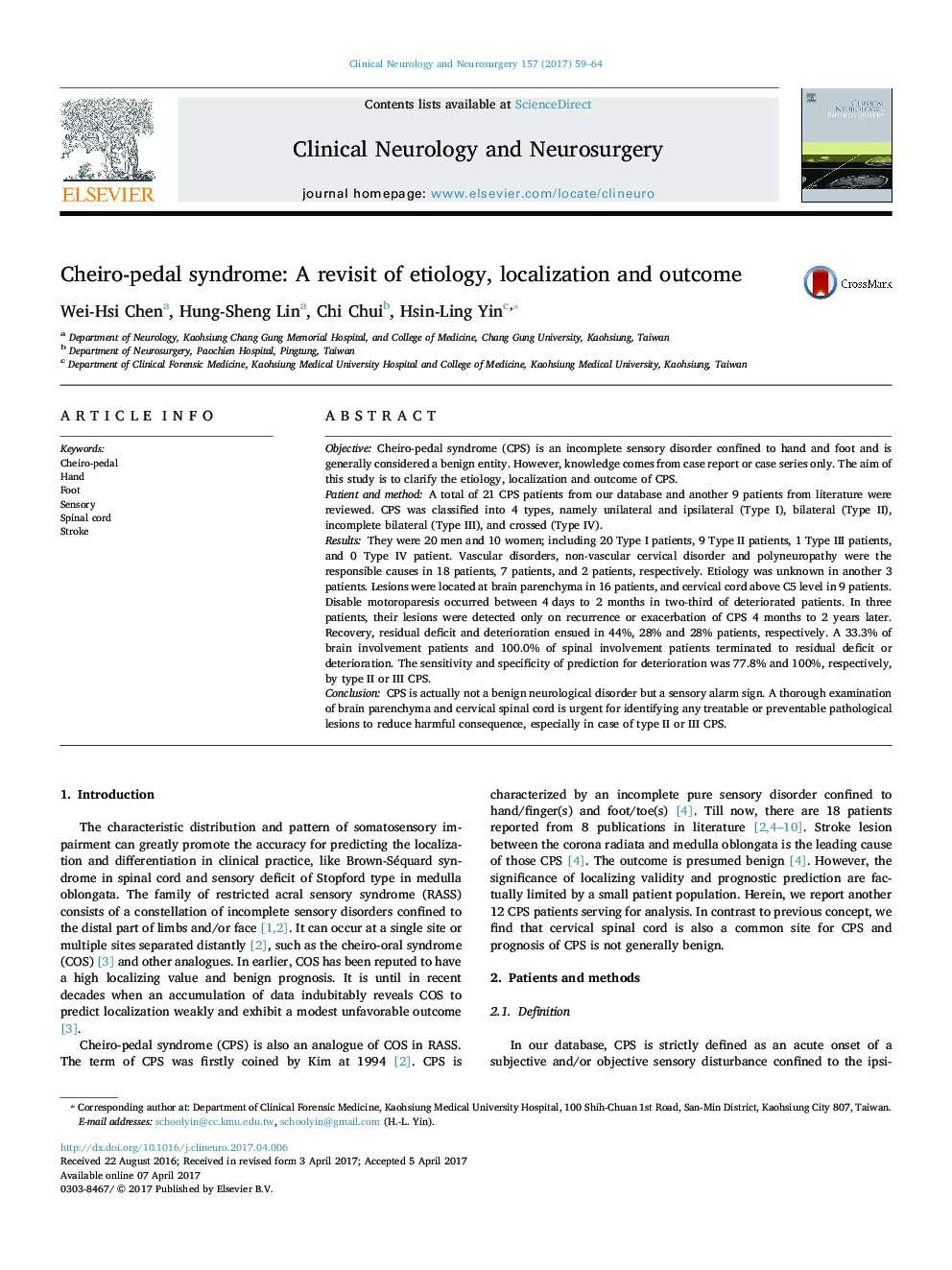| کد مقاله | کد نشریه | سال انتشار | مقاله انگلیسی | نسخه تمام متن |
|---|---|---|---|---|
| 5627140 | 1579665 | 2017 | 6 صفحه PDF | دانلود رایگان |

- CPS is not a benign entity but a sensory alarm sign in clinical practice.
- A thorough examination of brain and cervical spine cord is needed to avoid harmful consequence.
- A follow-up is necessary for neuroimaging-negative cheiro-pedal patients.
- The sensitivity and specificity of prediction for deterioration was 77.8% and 100%, respectively, by type II or III CPS.
ObjectiveCheiro-pedal syndrome (CPS) is an incomplete sensory disorder confined to hand and foot and is generally considered a benign entity. However, knowledge comes from case report or case series only. The aim of this study is to clarify the etiology, localization and outcome of CPS.Patient and methodA total of 21 CPS patients from our database and another 9 patients from literature were reviewed. CPS was classified into 4 types, namely unilateral and ipsilateral (Type I), bilateral (Type II), incomplete bilateral (Type III), and crossed (Type IV).ResultsThey were 20 men and 10 women; including 20 Type I patients, 9 Type II patients, 1 Type III patients, and 0 Type IV patient. Vascular disorders, non-vascular cervical disorder and polyneuropathy were the responsible causes in 18 patients, 7 patients, and 2 patients, respectively. Etiology was unknown in another 3 patients. Lesions were located at brain parenchyma in 16 patients, and cervical cord above C5 level in 9 patients. Disable motoroparesis occurred between 4Â days to 2 months in two-third of deteriorated patients. In three patients, their lesions were detected only on recurrence or exacerbation of CPS 4 months to 2 years later. Recovery, residual deficit and deterioration ensued in 44%, 28% and 28% patients, respectively. A 33.3% of brain involvement patients and 100.0% of spinal involvement patients terminated to residual deficit or deterioration. The sensitivity and specificity of prediction for deterioration was 77.8% and 100%, respectively, by type II or III CPS.ConclusionCPS is actually not a benign neurological disorder but a sensory alarm sign. A thorough examination of brain parenchyma and cervical spinal cord is urgent for identifying any treatable or preventable pathological lesions to reduce harmful consequence, especially in case of type II or III CPS.
Journal: Clinical Neurology and Neurosurgery - Volume 157, June 2017, Pages 59-64